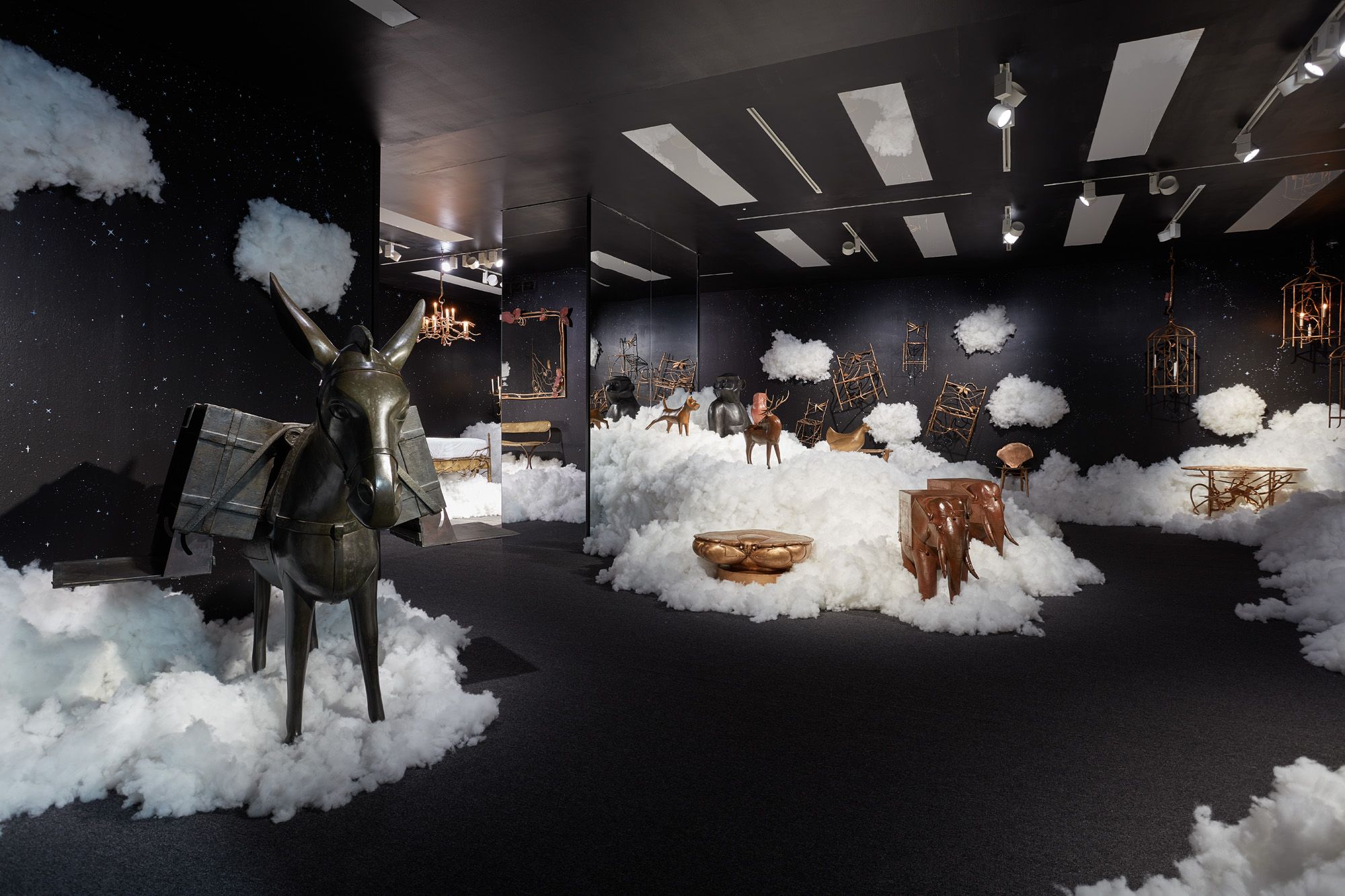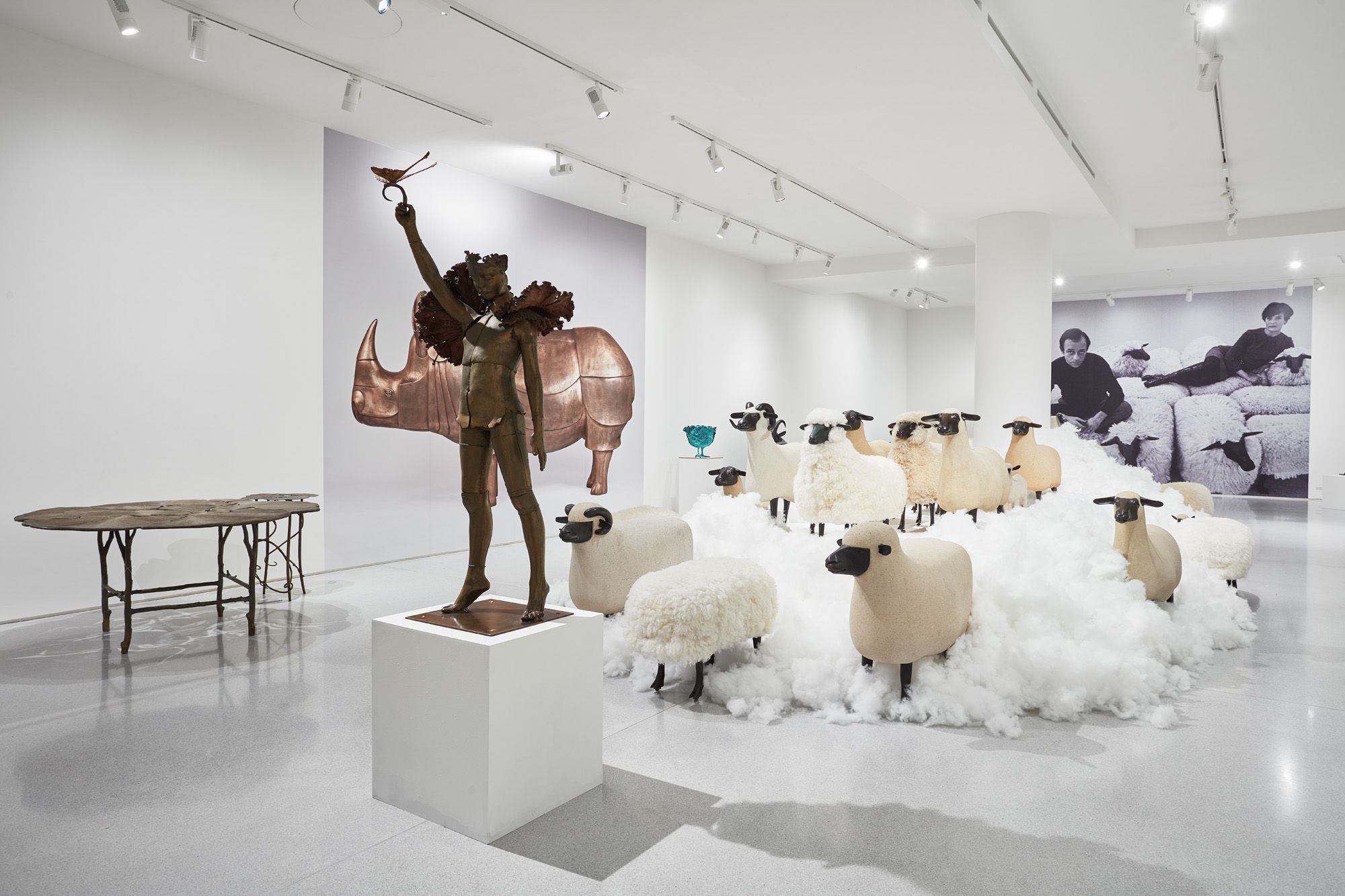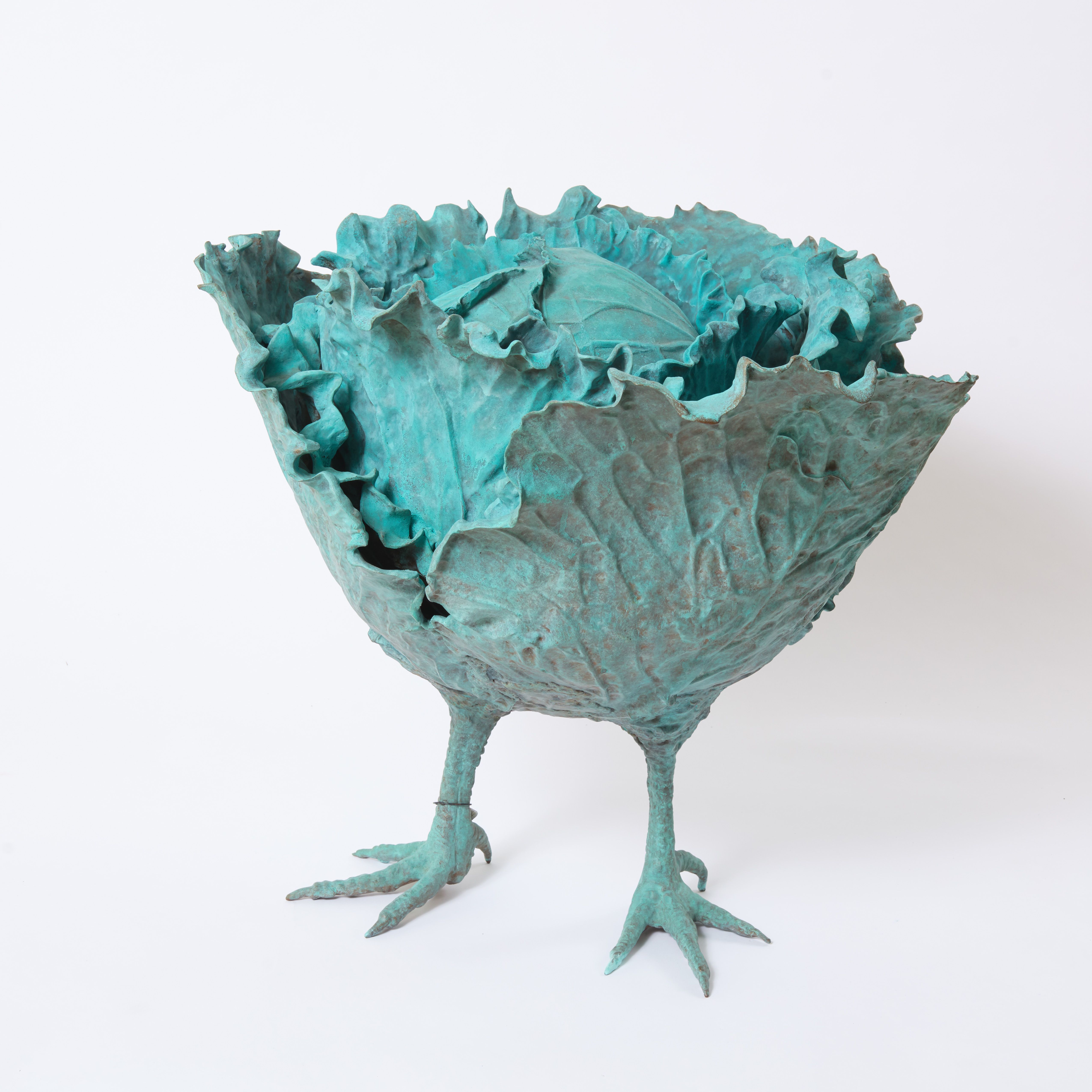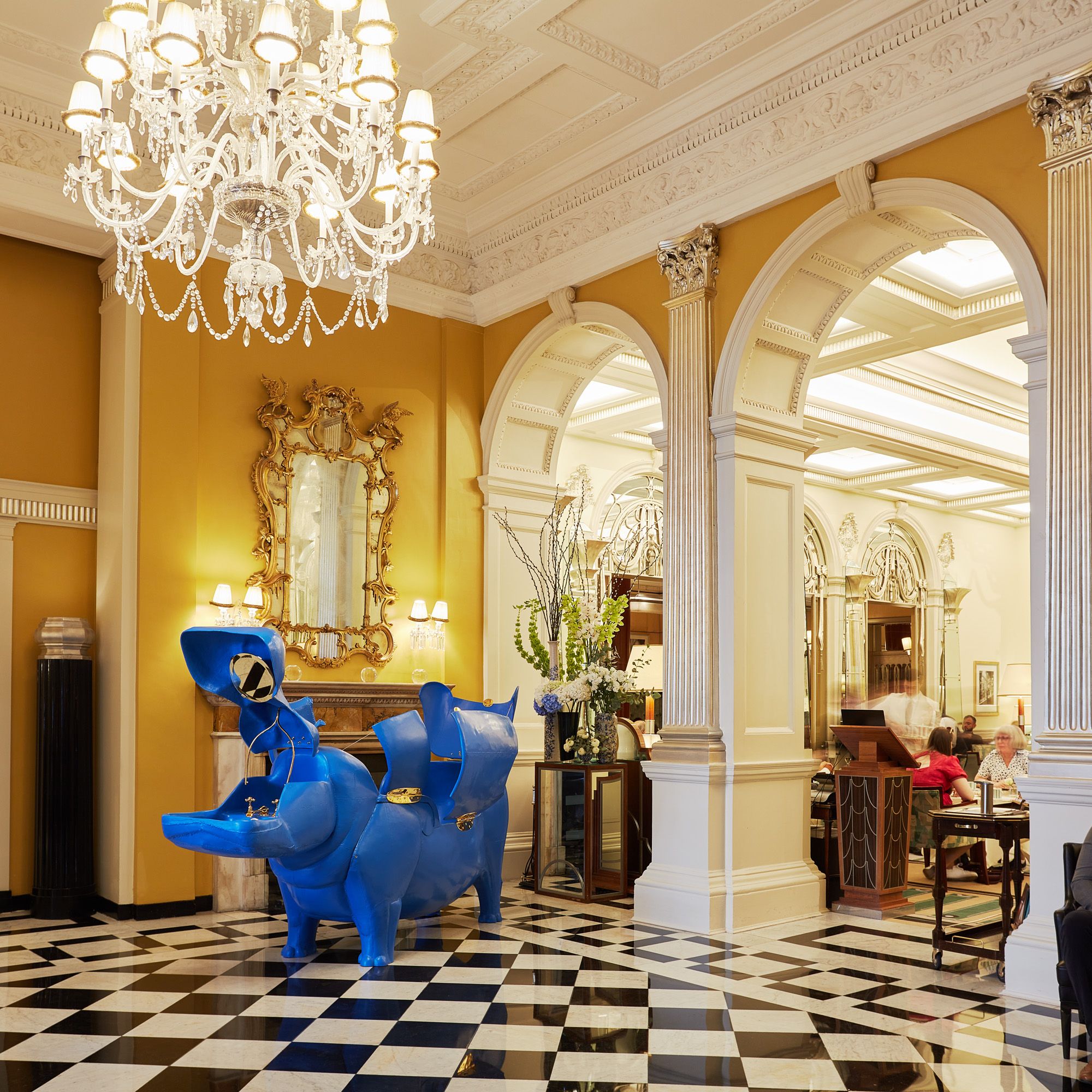
The late François-Xavier and Claude Lalanne, collectively known as Les Lalanne, were one of the most prolific artistic duos of the 20th century, devoting their shared lives to the creation of a surreal wonderland, populated by dreamlike welded sculptures that effortlessly transform furniture into fine art, and vice versa. Makers of Dreams currently showing at Ben Brown Fines Arts is the first major retrospective of the French artists' work in over a decade, coming three years after the passing of Claude Lalanne and curated by the brilliant interior designer Manfredi Della Gherardesca, who sadly also shed this mortal coil soon after the show opened. As such, the closing weeks of this exhibition provide a truly rare opportunity, not only to see some of the most important works ever produced by Les Lelanne, but also to step into a visionary curatorial vision that presents a dreamlike equilibrium of the couple’s works across both Ben Brown’s Fine Art and Claridges’ Art Space – the flagship gallery taking on the guise of a dreamy nocturnal sky; the bright white walls of Claridge’s Art Space providing a more heavenly canvas. Here, Ben Brown, the longtime exhibitor, friend and confidante of both Les Lalanne and Manfredi, gives Culture Collective a unique insight into the creative drive behind one of the most iconic artistic partnerships of modern history.
What was the conceptual genesis of Makers of Dreams?
I’m probably best known in the art market for the Les Lalanne phenomenon, and, in a way, this show is a culmination of everything I've ever done. You can’t really understand Les Lalanne until you see a great show, because you need to go into their world to understand what they were actually trying to do, which was to create this kind of ethereal and surreal space. I mean, these were people trying to create great art through creating a magical world you could actually step into, and I think we’ve been successful in communicating that. Manfredi did some incredible things in his life, and created some extraordinary houses, such as his own incredible home in Basset Road, but I do feel that this show could be deemed to be his masterpiece. Here, we’ve got probably the top 20 things that they ever created, and there is a really light touch to the show that allows them all to speak. It was a great shock when he passed away. I spoke to him the day before he died. He was in a good space. He was very proud of this show.
Do you think the work of Les Lalanne is evocative of the love between Claude and Francois? A form of communication between them…
I've never been asked that before. I guess that it is. I mean, there is a very lovely kind of symbiotic relationship between the artworks, which is very touching, and the two of them obviously had an extraordinary relationship. They always talked about the Yin and Yang between the useful and the useless – and there was certainly always a Yin and Yang between Claude and François-Xavier. They both worked incredibly hard, every single day, in an extraordinary French country house – this truly magical world that you can see in the film we have in the show. After breakfast, he would go right, and she would go left, and they would then be working alone on almost opposite sides of their courtyard. They would then meet for lunch, and afterwards go back their separate ways to work again. I never witnessed them disagreeing on anything, and they were together for 50 years, or something like that.

Why do you think Manfredi was able to intuitively understand what they were trying to communicate?
Manfredi completely understood the Les Lalanne world having been to that house. I can't remember how many times he came out there, but I would've thought at least three or four. And the more you go to their house, the more likely it is that if you've got the incredible imagination and style of someone like Manfredi, you will nail it. I remember having the most extraordinary lunches and dinners at that house, and being flabbergasted by certain things – especially when they produced Pomme de Ben, which is the sculpture of the apple with the monkey sitting on it. It was really wonderful when they named that after me – that's probably the single most enduring legacy that I have, is that 200 years from now people might say, why is this called Pomme de Ben?

Do you think they were conscious of straddling art and design?
No, absolutely not. They didn't think about those kind of things. They just thought that it was what they were destined to do in life. They made the art they wanted to make, and they kept moving on from whatever it was at one point, to the next thing. They just moved forward and their work evolved slowly over the years. And, in a way, it was just a little step forwards every couple of years. There were never any drastic changes – it was not like they suddenly moved to Rome and started doing abstract paintings, or anything like that. Both of them just carried on and on, and the train was always going in one direction.

Do you have any favourite pieces in the show?
I love a hell of a lot of them. The grasshopper bar is one of my favourites in the show, and I think that the chandelier is absolutely beautiful. I suppose, for me, though, probably the greatest object that Claude ever created is the cabbage with the chicken feet, because that kind of encapsulates all of her surreal vision. But they both contributed to that sort of sense of whimsical surrealism equally, and I think you can really see that in the show – you know, you've got the smoother animals, if you like, on the one side, and then you've got pieces like the table with the monkey underneath it, and the incredible table with the snakes in it.

Do you think Les Lalanne maintained a connection to childhood innocence in their practice?
Yes, they managed to maintain a real innocence in their art, which is rather delicious. I mean, the pressure's on a couple when they see each other for breakfast, lunch, and dinner every day, but there never seemed to be jealousy, or anything like that, between them – neither one of them ever superseded the other. I think most people who went to their house, which was really the nucleus of it all, and saw what was going on there, would immediately realise what they were trying to achieve. And that's what I want people to experience here. I hope anyone who comes to see the show will leave really understanding the nature of the art, and go away thinking that Les Lalanne are as great as I always thought they were.
Les Lalanne: Makers of Dreams exhibits at Ben Brown Fine Arts and Claridge's Art Space, Mayfair until July 29th. Installation images by Tom Carter